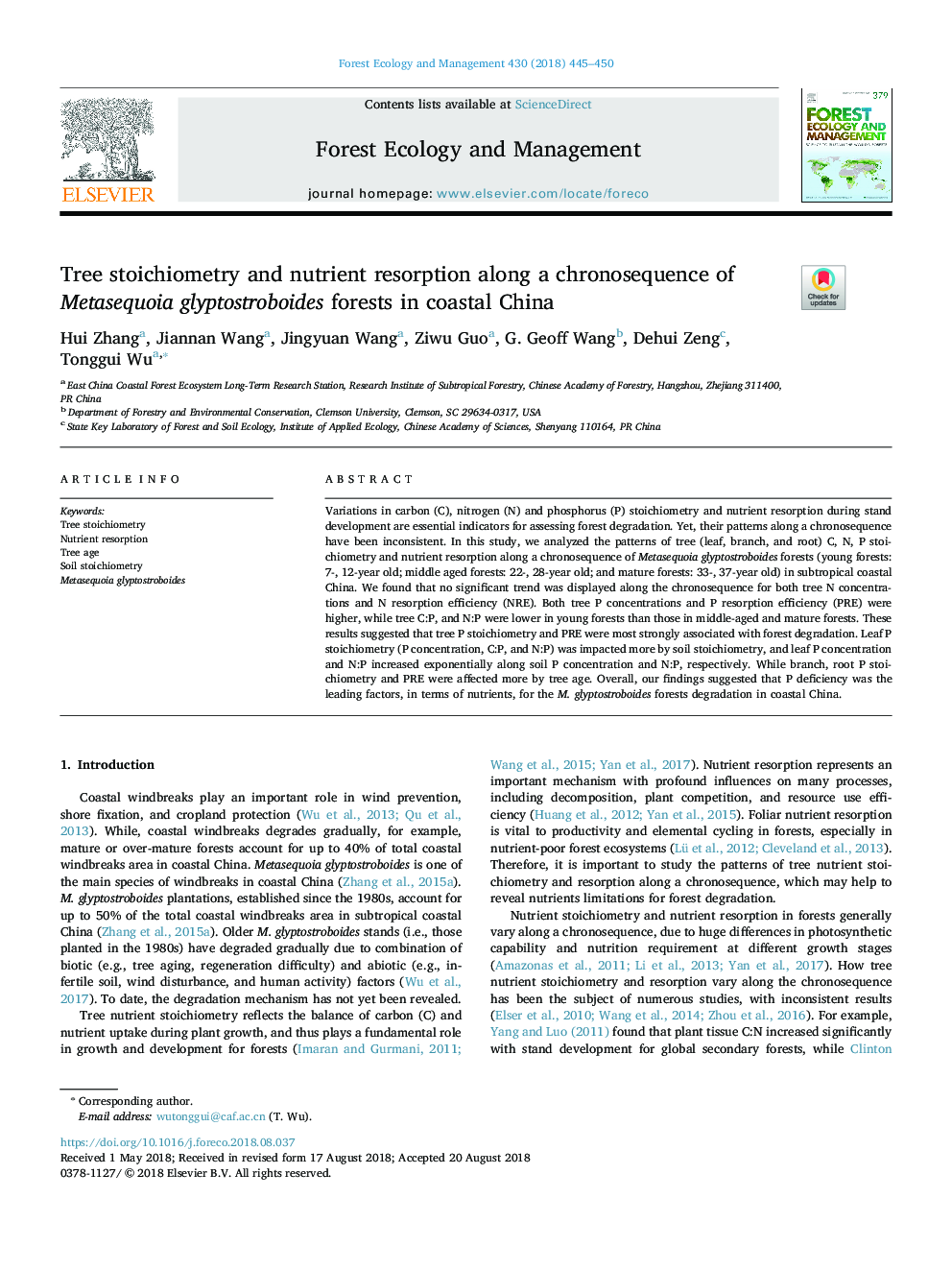| Article ID | Journal | Published Year | Pages | File Type |
|---|---|---|---|---|
| 11000039 | Forest Ecology and Management | 2018 | 6 Pages |
Abstract
Variations in carbon (C), nitrogen (N) and phosphorus (P) stoichiometry and nutrient resorption during stand development are essential indicators for assessing forest degradation. Yet, their patterns along a chronosequence have been inconsistent. In this study, we analyzed the patterns of tree (leaf, branch, and root) C, N, P stoichiometry and nutrient resorption along a chronosequence of Metasequoia glyptostroboides forests (young forests: 7-, 12-year old; middle aged forests: 22-, 28-year old; and mature forests: 33-, 37-year old) in subtropical coastal China. We found that no significant trend was displayed along the chronosequence for both tree N concentrations and N resorption efficiency (NRE). Both tree P concentrations and P resorption efficiency (PRE) were higher, while tree C:P, and N:P were lower in young forests than those in middle-aged and mature forests. These results suggested that tree P stoichiometry and PRE were most strongly associated with forest degradation. Leaf P stoichiometry (P concentration, C:P, and N:P) was impacted more by soil stoichiometry, and leaf P concentration and N:P increased exponentially along soil P concentration and N:P, respectively. While branch, root P stoichiometry and PRE were affected more by tree age. Overall, our findings suggested that P deficiency was the leading factors, in terms of nutrients, for the M. glyptostroboides forests degradation in coastal China.
Related Topics
Life Sciences
Agricultural and Biological Sciences
Ecology, Evolution, Behavior and Systematics
Authors
Hui Zhang, Jiannan Wang, Jingyuan Wang, Ziwu Guo, G. Geoff Wang, Dehui Zeng, Tonggui Wu,
